On March 24th, 8 members finally made the trip to Groningen organised by our member Pieter Shaw, the trip having been postponed from a year earlier due to the pandemic. The itinerary included visits to churches in Noordbroek, Bellingwolde, Groningen and Leens, to play the well preserved baroque organs of the region, including the 1696 Arp Schnitger organ of the Dorpskerk (Noordbroek) and the 1733 Hinsz organ at the Petruskerk, Leens. You can read more about the trip in the members’ thoughts below.
Itinerary
- Friday, March 25th
- Eurostar from St Pancras to Amsterdam (about 4 hours), then train on to Groningen (another 2.5 hours)
- Saturday, March 26th
- AM: Train to Zuidbroek, then on by car to the Dorpskerk at Noordbroek for a masterclass with Peter Westerbrink on the 1696 Arp Schnitger organ.
- PM: Back to Bellingswolde, to visit the Magnuskerk and the Schnitger/Freytag organ.
- Sunday, March 27th
- Bus to Leens, to visit the 1733 Hinsz organ at the Petruskerk. The church also has 3 chamber organs.
- Monday, March 28th – Organs in the city of Groningen:
- AM: the Lutherskerk which has two organs, one more romantic by van Oekelen, and a more recent baroque style organ by Bernhard Edskes.
- PM: the A-kerk, which has a large 3 manual Schnitger organ.
Pieter Shaw
Saturday morning
The first visit of the trip was to the Schnitger organ in the village of Noordbroek. The church is not only famous for its fine organ, arguably one of the best examples of Schnitger which remains more or less untouched but also the wonderful medieval ceiling paintings of various biblical scenes. These are in remarkably good condition but are about to be conserved.
The church is very large for such a small village but the acoustics are particulary fine.
The group were met by Peter Westerbrink who introduced everyone to the organ and then conducted a masterclass for a number of the group. Each person had prepared a piece of music from the North German repertoire.
Afternoon
We then made our was to the Magnuskerk in Bellingwolde, the home of a fine example of a Schnitger/Freytag organ. The group were welcomed with a hearty lunch comprising filled rolls, cake and coffee! People were free to explore the organ for the whole afternoon. In the early evening everyone was driven back to the local railway station for the train to take them back into Groningen.
Sunday afternoon
After a free morning the next visit was to the Petruskerk in Leens, a village north west of the city of Groningen. The organ is particularly fine and has recently been completely restored back to its original state when first built. The organ was built by Anthonius Hinsz and is regularly used for recitals and recordings.
Monday morning
The group visited the Luthersekerk in the city centre. The presence of a Lutheran community in the city is due to the large population of German imigrants during the 18th century. When first built this church has a fine Schnitger organ but this was lost in the 19th century and was replaced by a more romantic van Oekelen organ. This still exists in the western gallery. Recently a second organ was commissioned from the well known Dutch/Swiss organ builder Bernhard Edskes who recreated a baroque instrument in the Schnitger style. The organist Tymen Bonda met the group and introduced them to both instruments.
Monday afternoon
The last visit was to the A-kerk in the city centre. This church is now decomissioned and is currently used as a centre for the performing arts. The organ is a large 3 manual Schnitger although many other organ builders have had an influence on the instrument over the years. Peter Westerbrink is the curator organist here and was present to welcome the group to the church and was on hand to help people get to grips with an instrument which is challenging to play.
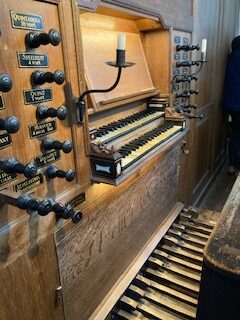
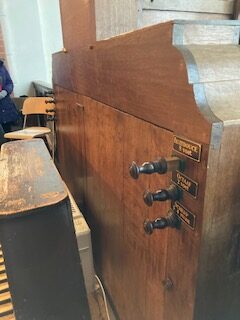
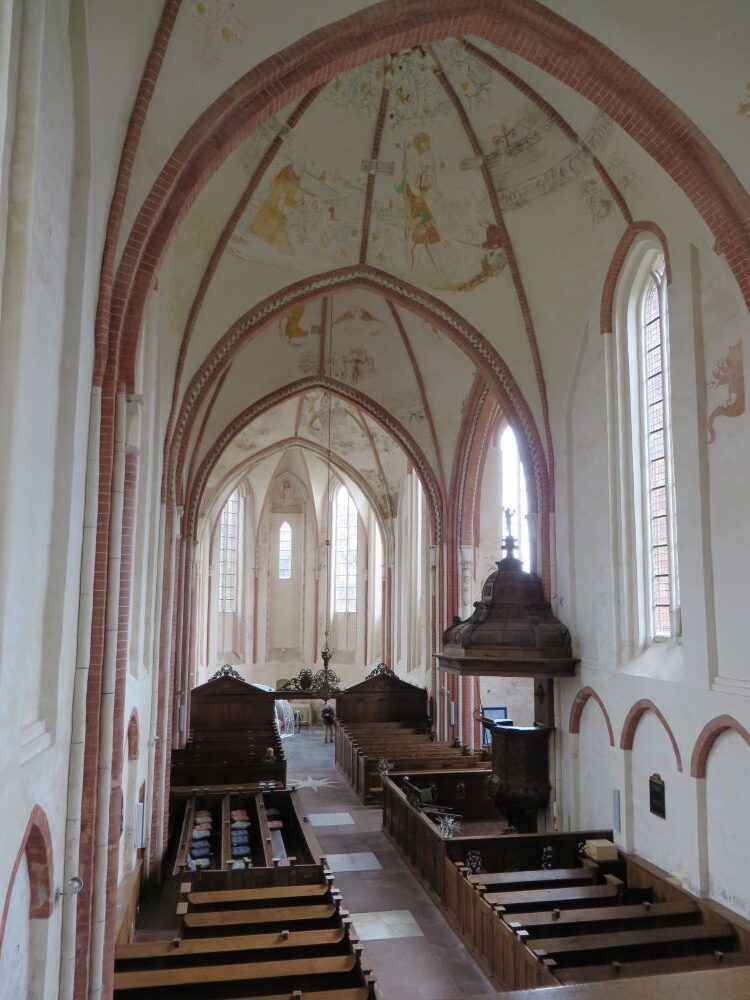
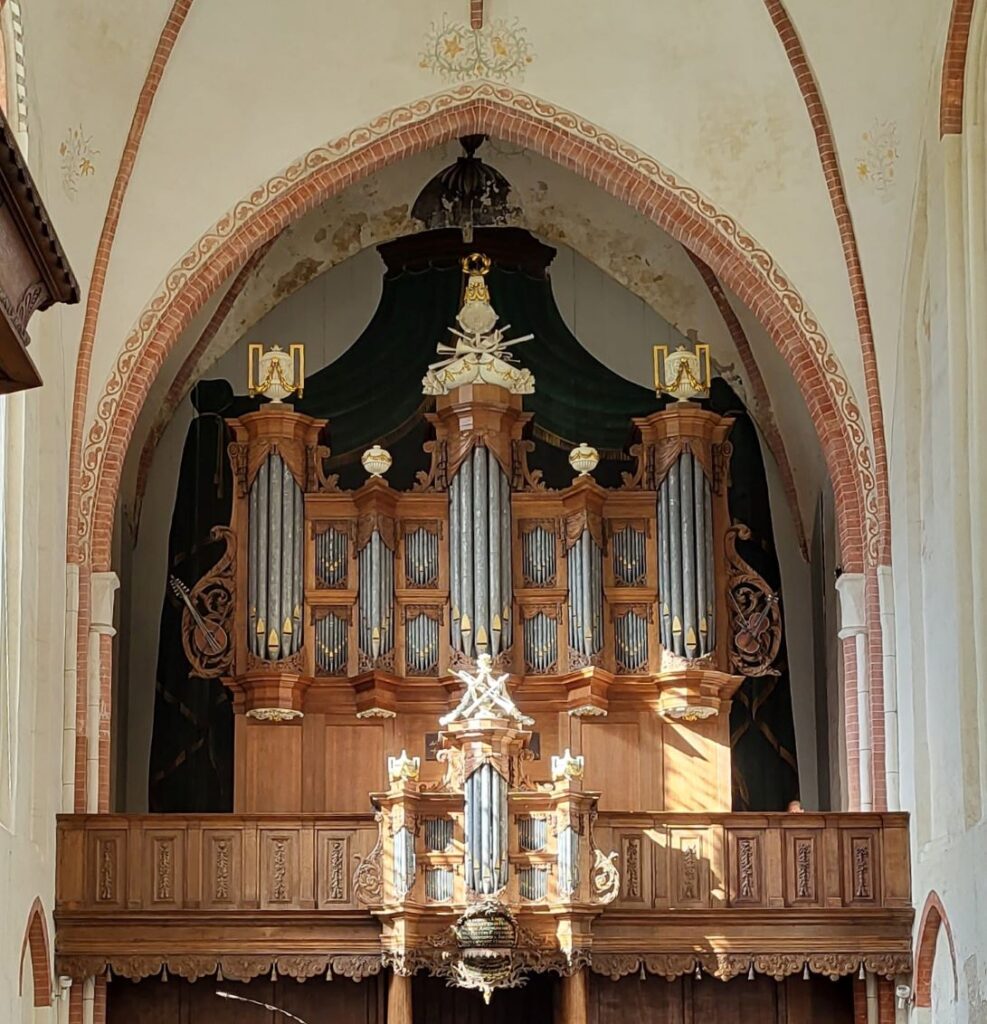
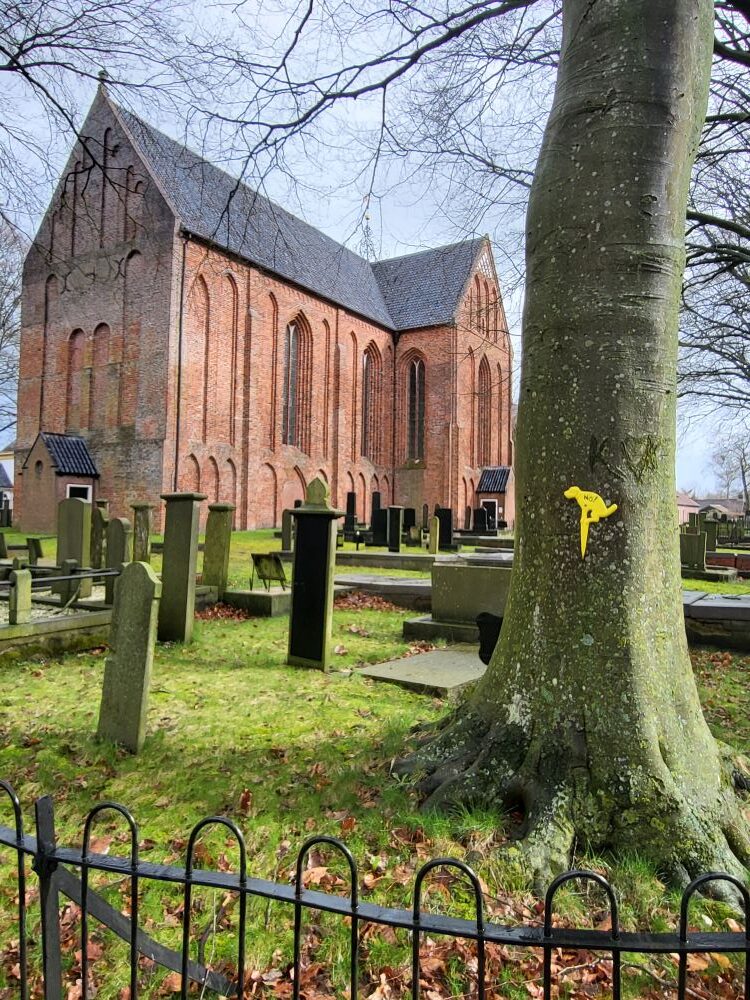
John Webber
This trip will be memorable for several reasons: the several friendships, the amazing planning by Pieter Shaw (our man in Groningen), the churches and their amazing organs and the landscape (which was new to me). The food and drink were pretty good, too.
Seven of the eight travellers are organists: the exception, Ian Clifford, is a longstanding friend: very long, as we were at school together. Ian is a member of my church choir (and in two other local choirs) and his house radios are always tuned to Radio 3, so he easily passes the test of being an “honorary organist”! The rest of the group was made up of Marilyn and Norman Harper, who knew the area and most of the churches from previous visits of their own; this proved useful at times! Also with us were Sarah Best (from North London) and Michael Cooke (from Whitstable; he will be hosting our May outing), together with other locals Nicky Jones and Alan Langridge.
The Friday was about travelling by Eurostar and our arrival. On Saturday we went by train to Zuidbroek, where Pieter met us and drove us to the church at Noordbroek. Highly regarded tutor Peter Westerbrink led a masterclass at this ancient church, where the organ dates from 1696. In the afternoon we went by bus to Bellingwolde Church (where our host, Pieter Shaw, is part of the team of organists); the visit here included a surprise tea party, with enormous offerings of wonderful food. The bulk of churches in this region are Lutheran or Calvinist, with an emphasis on the preaching. Pulpits looked awesome (in any sense) and were usually high above the congregation. The organs are often ornate and most were older than the average British instrument. Sadly, there is nowadays a very low proportion of the population attending church, so many buildings are redundant. Nonetheless, recital series of a very high standard take place in many areas (even remote places) and the Government is prepared to support both buildings and organs financially.
On Sunday some of us visited St Joseph’s Catholic Cathedral in Groningen for 11.00a.m. Sung Mass; this was where we were on familiar ground, with a church which looked much like ones that we know back at home. There was even an English order of service for the day. An hour by bus took us in the afternoon to Leens play the organ built by Hinsz. Leens is a remote spot with another church well worth the seeing and hearing.
Monday involved seeing two churches in Groningen itself, so within walking distance.
The one thing which was very hard work was the winding and often narrow staircases up to the inevitable organ galleries.
A great trip and I shall remember it for a long time.
John Webber, 30 March 2023
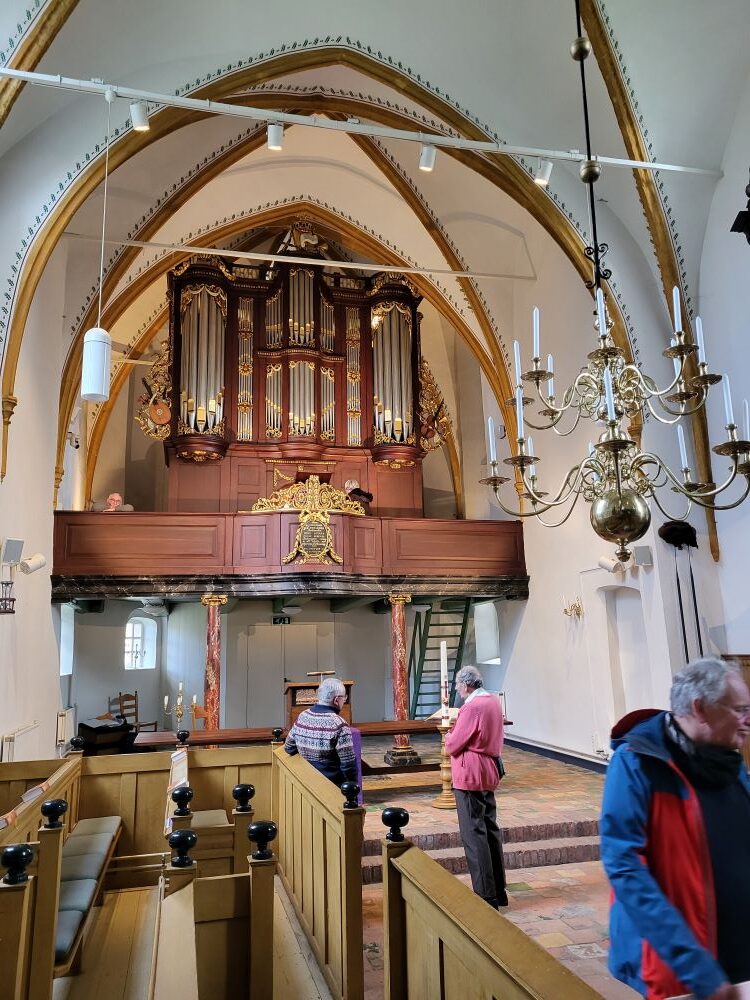
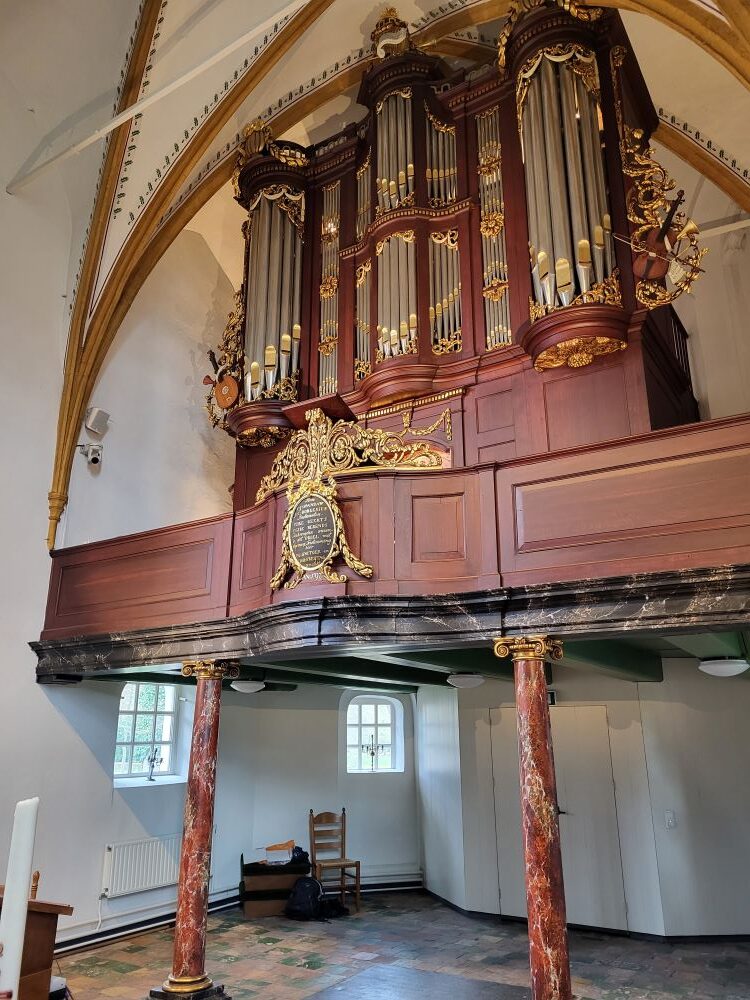
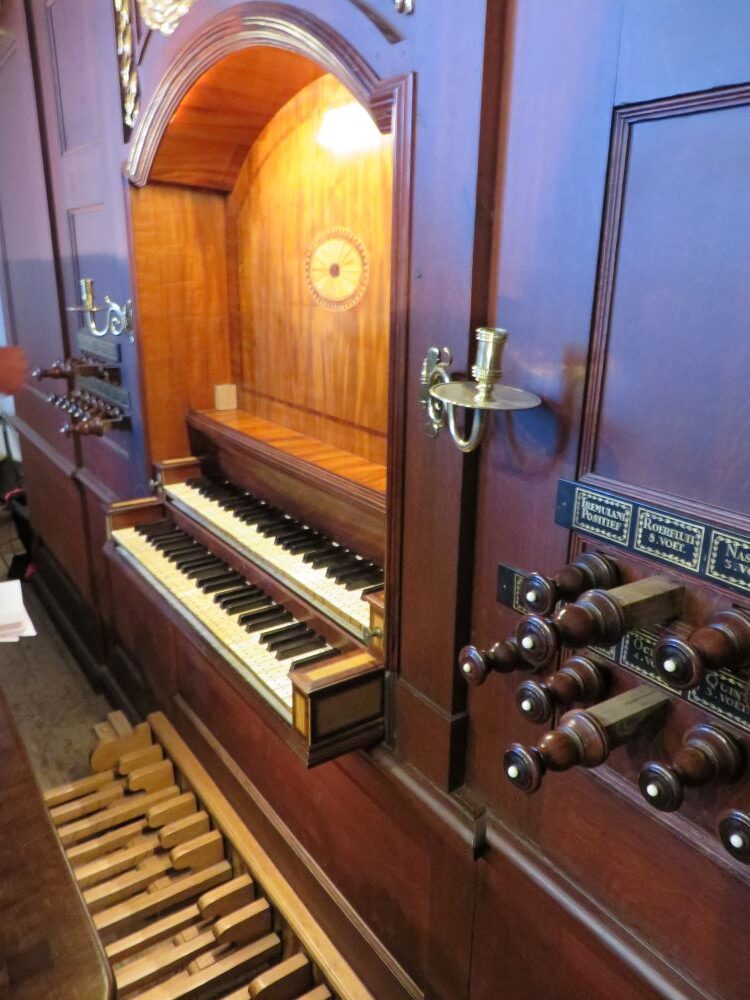
Sarah Best
Having had no experience of Baroque organs, I was looking on this trip as a learning curve. So ….. everything was different – the touch, the size of the keys, the stubby pedals (oops!), the shorter range, I suppose the stops were in some sort of order, but I couldn’t work that out, and I’ve never met stops which are behind the player! Or so many lethal narrow staircases! But we had those beautiful sounds, they were a treat to listen to.
Our Dutch member, Pieter Shaw, managed everything impeccably his end, and we were happily jostled along the rest of the time by Norman and Marilyn who had been before. It was a lovely easy-going, friendly group, and the locals were also very helpful and friendly. Nobody got mown down by the bicycles!
We saw acres of flat, water-logged land from the trains, plus a few herons etc.
It was so disappointing when the trip was cancelled last year, but it’s made up for it this time. Eerste klas!
Next time something more romantic??
Sarah Best, 2 April 2023
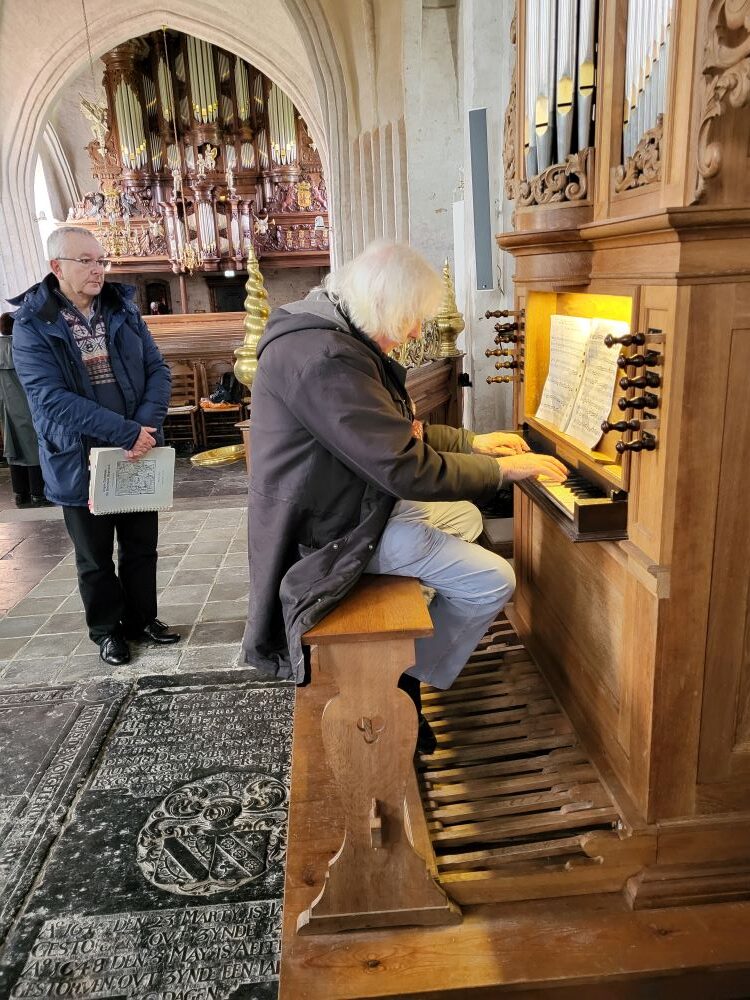
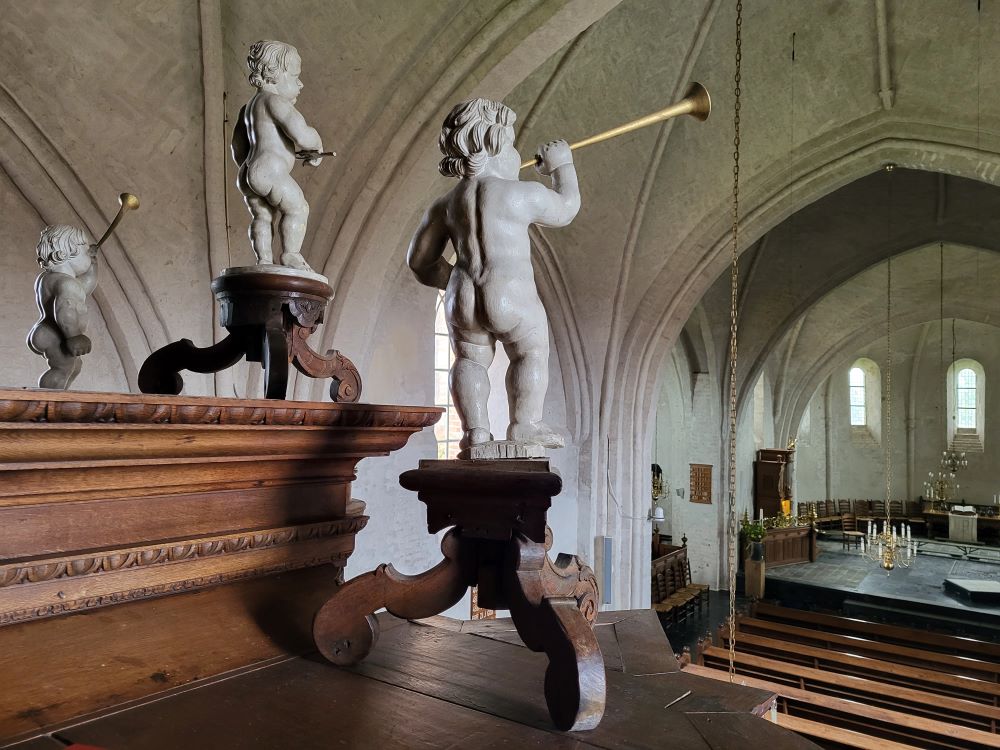
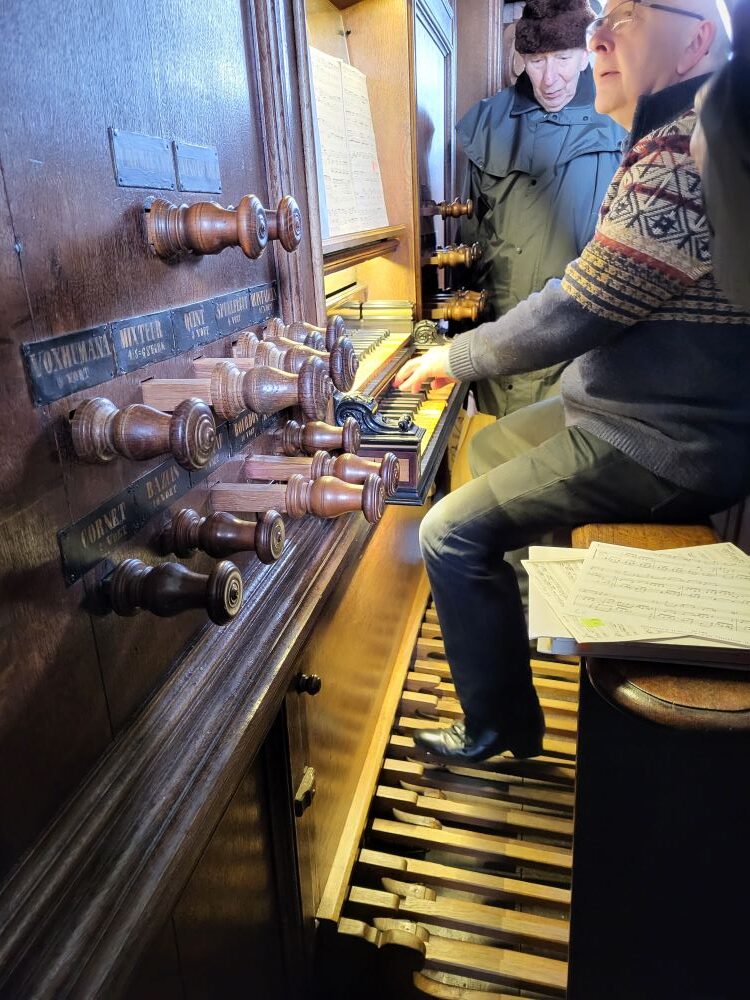
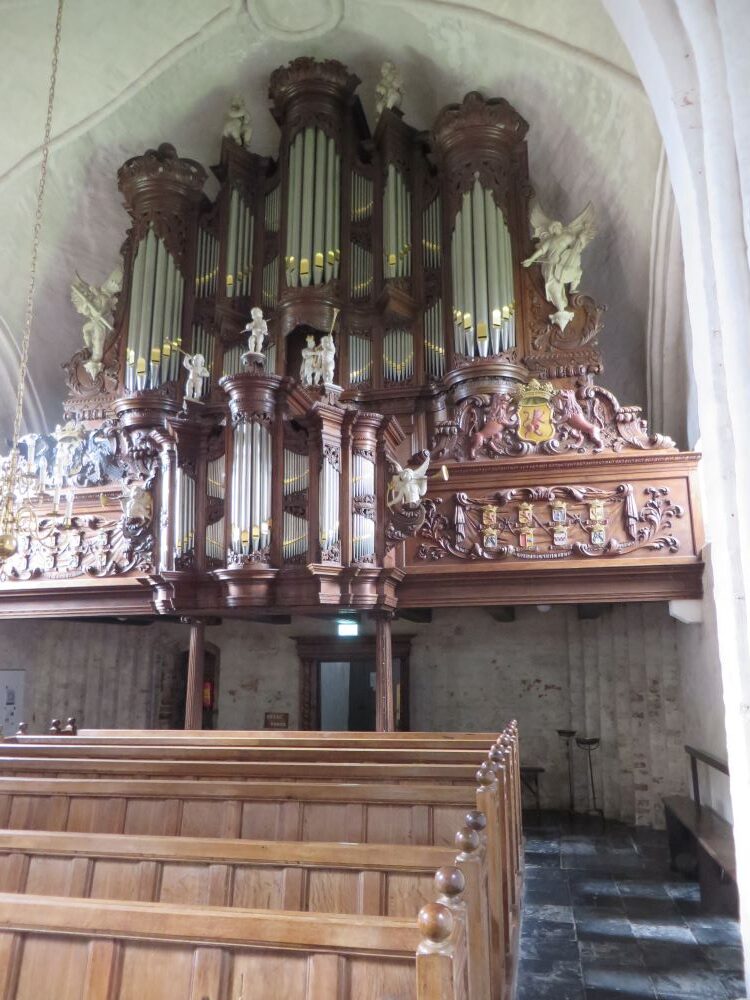
Marilyn Harper
Following a tour of the historic organs of the Netherlands with the Organ Club in 2017, Norman and I have since played some of these outstanding organs. They are well cared for, despite most churches being closed for regular worship. They are visited and played by people from all over the world. Through the Fugue State Films videos and recordings, many more are now able to learn about these historic instruments.
On this occasion, Norman and I were playing organs already visited. For me, one highlight of this visit was the time spent with Peter Westerbrink, one of Holland’s master organists in Noordbroek, where cold temperatures in this unheated church are tolerated. Peter is curator of the historic Noordbroek organ and of the A-Kerk organ in Groningen. Pieter Shaw’s church in Bellingwolde was warm and welcoming with beautiful food and lots of coffee prepared by two welcoming and friendly church members. The husband of one of the ladies helped Pieter ferry some of us to railway stations. From ground level, the organ case at the east end of the church in Bellingwolde is especially lovely. The Lutherskerk in Groningen has two organs, one older, one newer. The more recent organ has a sparkling tone, whereas the older organ has a warmer tone and is capable of playing more recent repertoire. The organ in Leens built by Hinze has a marvellous west end case, and three chamber organs at the east end of the church. CD’s of the main organ sell well. One is left in no doubt that the Dutch value their organ heritage. Funds are made available for the restoration of old buildings and organs. Other pleasurable experiences included getting to know our fellow members much better, enjoying meals, conversations and journeys together.Marilyn Harper, March 2023
A big learning curve for all was getting to grips with organs radically different from the modern English organ. Manual and pedal compasses can vary, pedals going only to D, with the notes being spread wider apart than most UK organists are used to. The pitch of Dutch organs can vary from one neighbourhood to another. The higher pitch of the Noordbroek and the AKerk organs completely wobbled my sound sense. B sounded like C#. Consequently, fingers and feet flew everywhere. One returned home humbled, and with fresh impetus to practise making significant musical gestures much bigger. It is about projecting the music in one’s head to the folks sitting at the back of the church. Everyone imagines that they play this way, until a wise listener suggests otherwise.
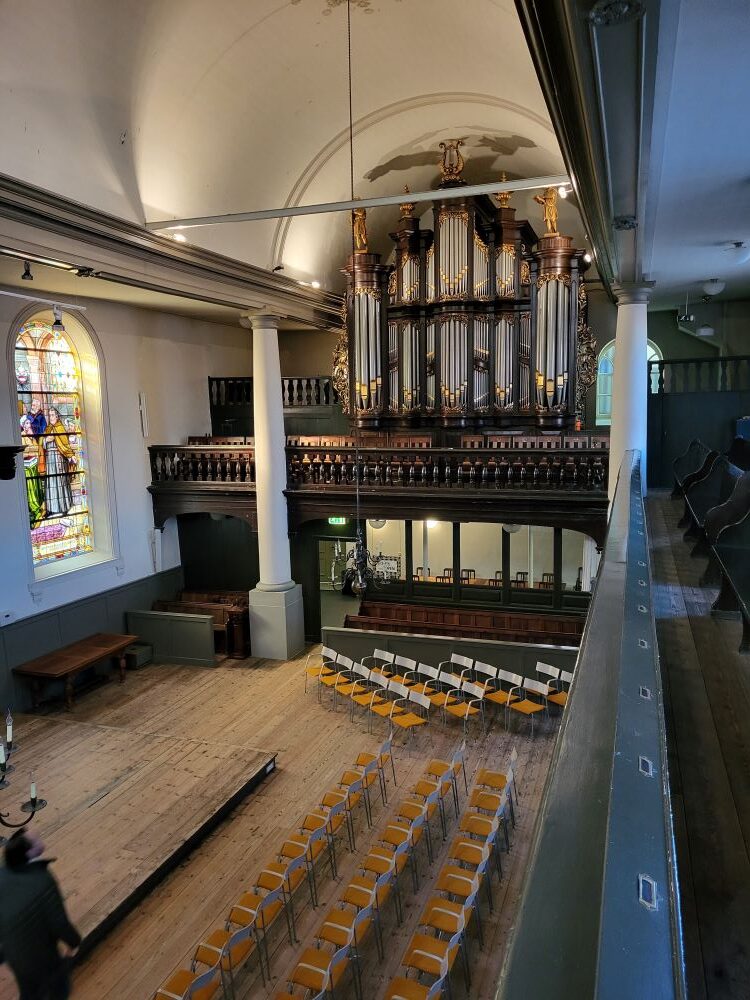
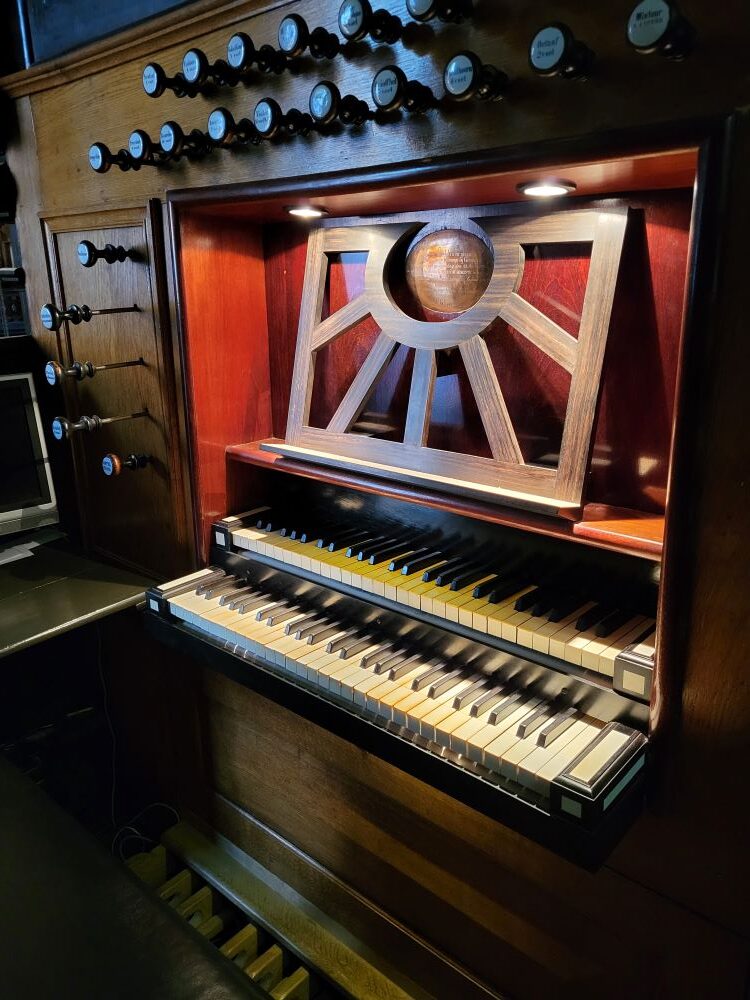
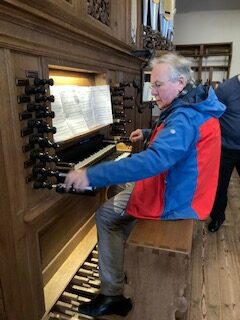
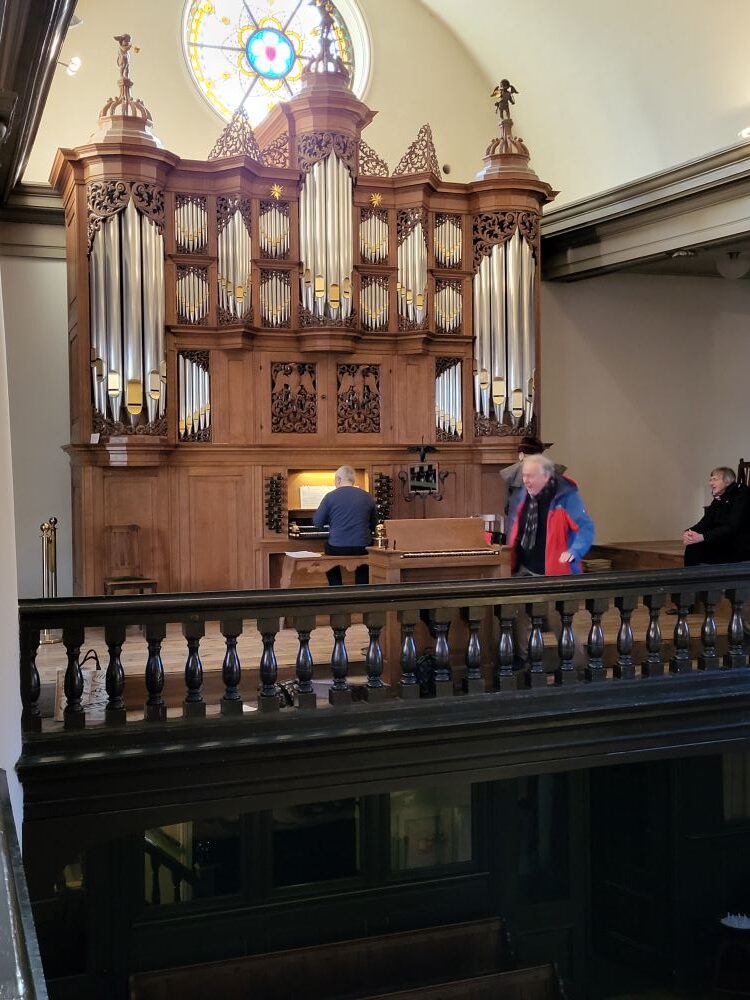
Michael Cooke
AN ORGAN CRAWL
(Two ladies over a garden wall)
Emma – O ‘ellow Til .
Tillie – ’ello Emma. Ow’s Harry? I ‘avent seen ‘im for a couple of days.
Emma – Nah, neiver ‘av I. E’s gon orf on one of them “Organ Crawls”, as ‘e calls ‘em.
Tillie – Oh. Bit like my George. You seem to be a bit of an organ wider, in the same way that I’m a dog wider. Anyroad, What is an “organ-crawl?”
Emma – They’re them things yer find in Churchis and other places. They go and visit two or three on a Sat’d’y. Still, wiv ‘im out the way I can get on wiv the ‘ousework”
Tillie – D’yer know where’s ‘e gon this time?
Emma – Dunno, – somewheres in ‘Olland, a place called G, something. Anyroad, ‘eel be back Tuesday. Yer never know what yer might find! They say that som of ‘em organs is very old. …….Old isn’t the word. One would say “ancient”, as a party of members of the S.S.L.S.O. discovered when they visited Groningen a couple of weeks ago. Getting up at Five in the morning wasn’t the easiest thing in the world, but having done so, what could have been more rewarding than not only to hear, but to actually play some of Arp Schnitger’s finest work. Some people were a bit sceptical about the train journey and ticketing system, having never done it before, but it almost worked itself. The Hotel was basic but good. There were two occasions when they had to provide their own lunch, but with a Sushi bar right next-door to the hotel what could be better than buying some sushi for about 3 Euros, and taking it to one’s bedroom to be eaten. The visit not only provided a unique opportunity, organ-wise, but enabled people to get to know each other better. Here’s to the next visit!
SEE YER TUESDAY, DUCKS!!! BYEEE!
MNC
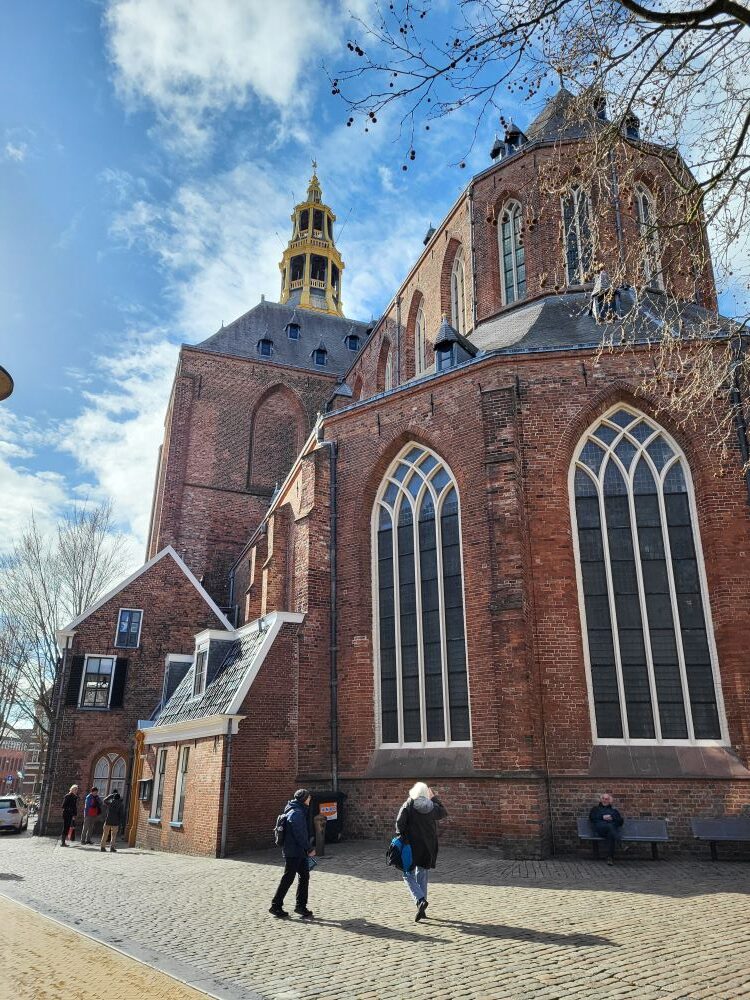
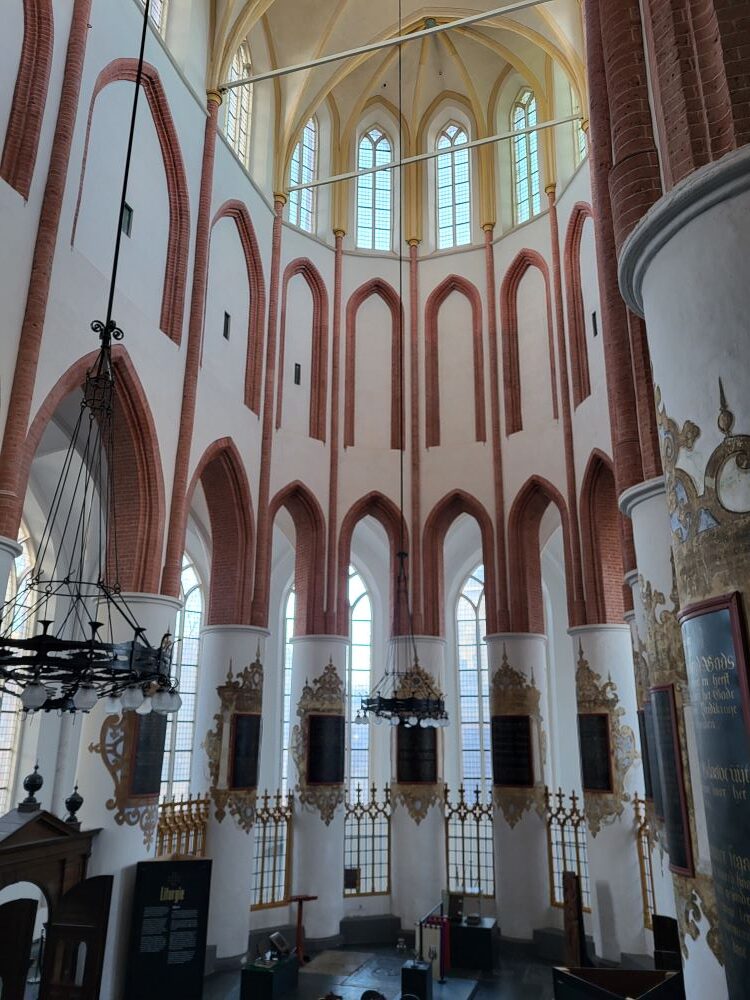
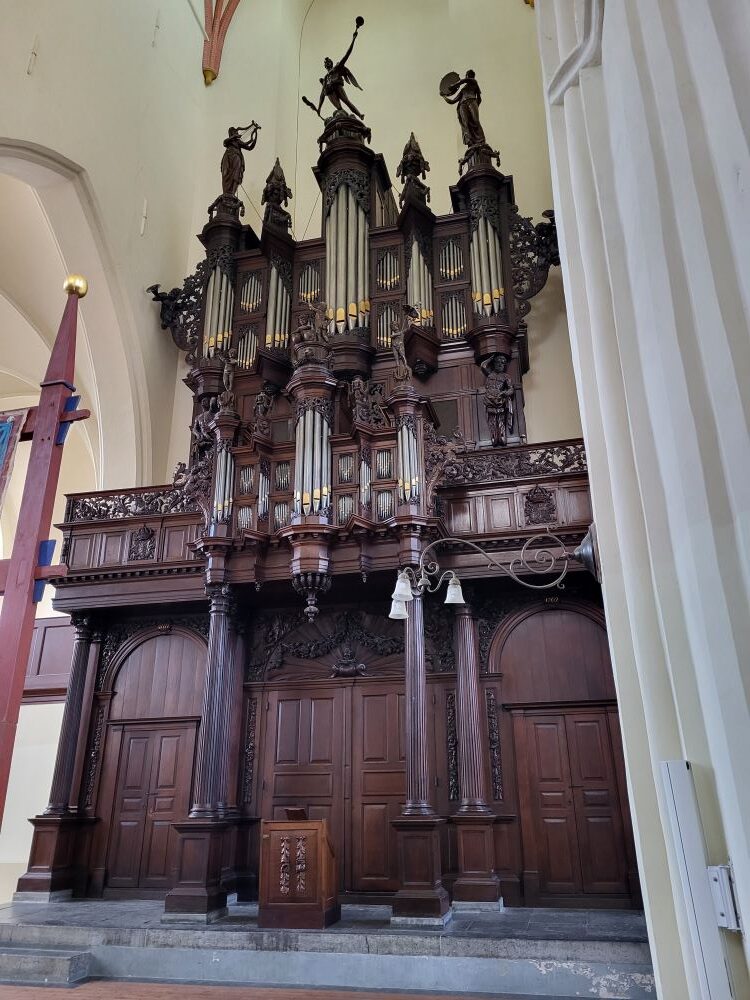
Nicky Jones
This hugely enjoyable trip combined visits to some truly spectacular organs.
The visit was enhanced by good company, nice meals and a comfortable stay at the Martini hotel.
On Saturday 25th March we visited Noordbroek with its huge and magnificent protestant church housing the 1696 Arp Schnitger organ. Here the highlight for me was the eminent Peter Westerbrink’s master class. Peter emphasized the vital need to really listen to the organ’s sounds and to find out what each particular instrument is capable of and prefers. He argued that no amount of reading books alone is a substitute to intent listening.
In the afternoon we were able to play the beautiful Magnuskerk Schnitger-Freytag organ at Bellingwolde. We were also given a wonderful welcome with a delicious sit down tea. There was no heating during our morning visit and we were so grateful for the warmth of the Magnuskerk!
On Sunday 26th March we visited the beautiful and famous Hinsz organ in Leens.
Then on Monday 27th March we visited the Luthersekerk on Haddingestraat and played the original Van Oeckelen 19th century instrument with its more romantic character and the new Edskes organ.
However, in my opinion, the jewel in the crown was our visit to the architecturally magnificent Akerk in Groningen with its 3 manual Schnitger instrument on Monday 27th March in the afternoon.
Once more we were warmly welcomed by Peter Westerbrink. Here the highlight for me was Peter’s improvised demonstration in which he brilliantly drew on the instrument’s romantic capabilities. Listening to this in such a stunning building was like being transported to heaven through a myriad of beautiful white clouds!
In short, a thoroughly enjoyable trip. Massive thanks to Pieter Shaw for his hard and detailed work in making it happen. Many thanks also to Marilyn and Norman for volunteering so much guidance and help based on their previous visits to the area.
Nicky Jones
April, 2023
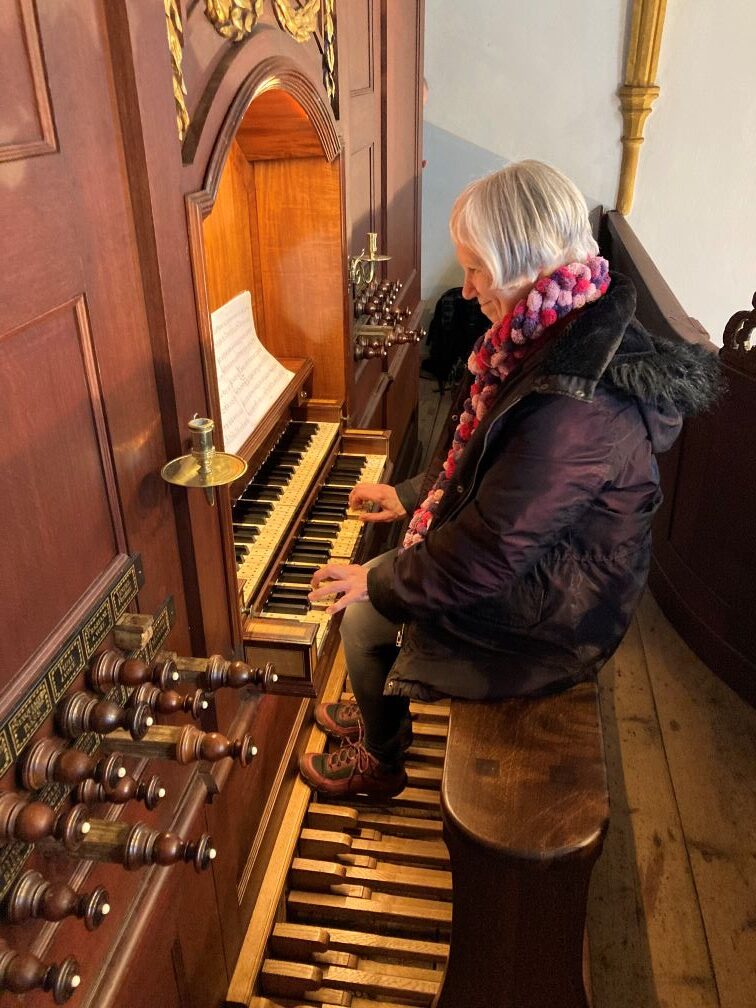
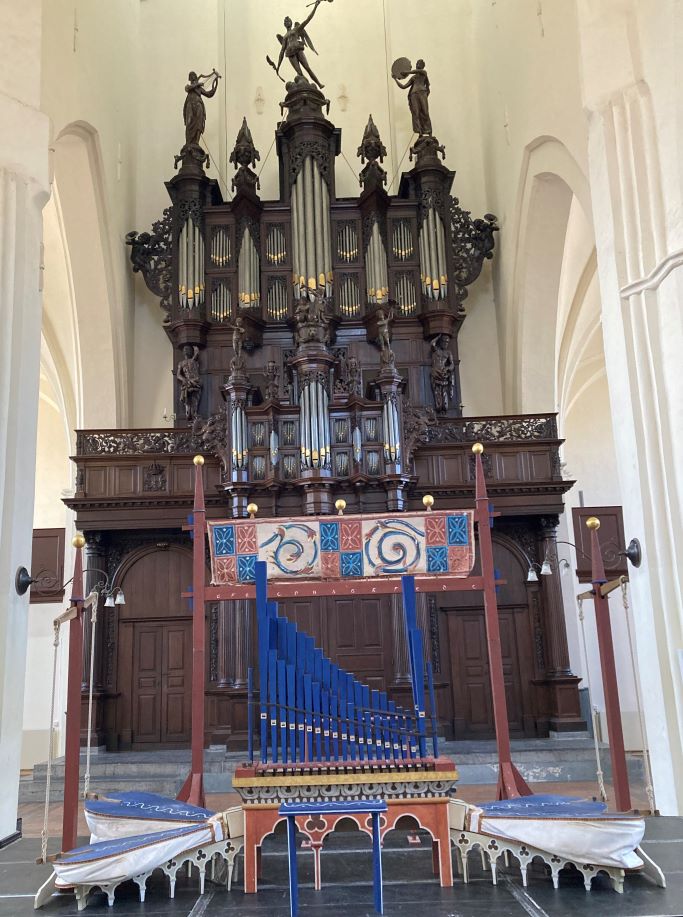
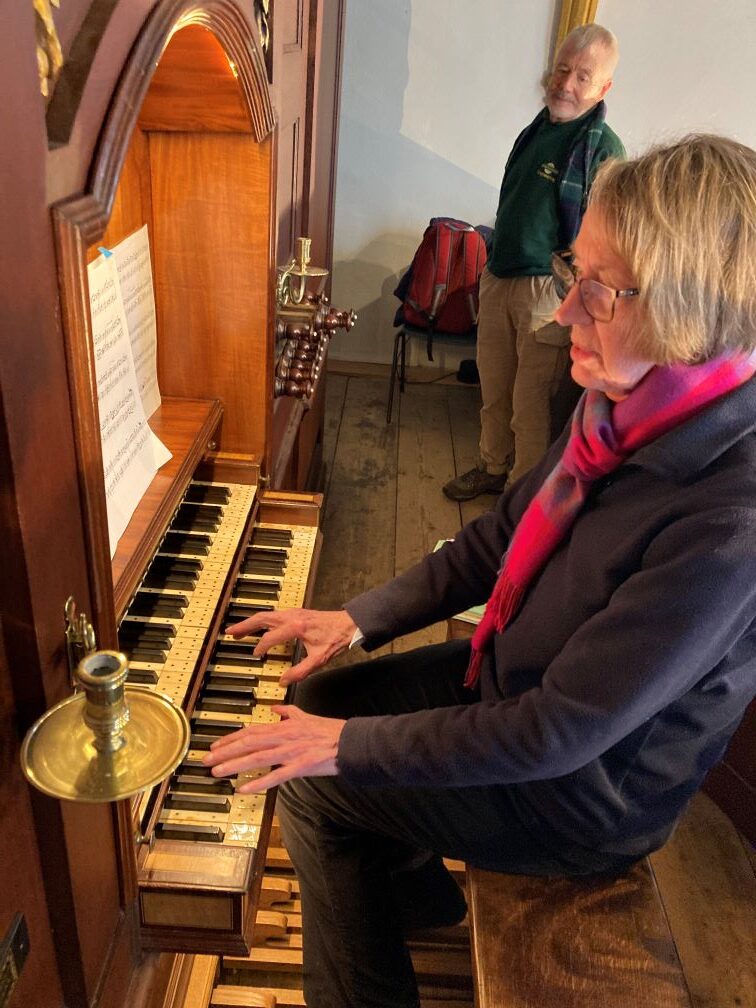
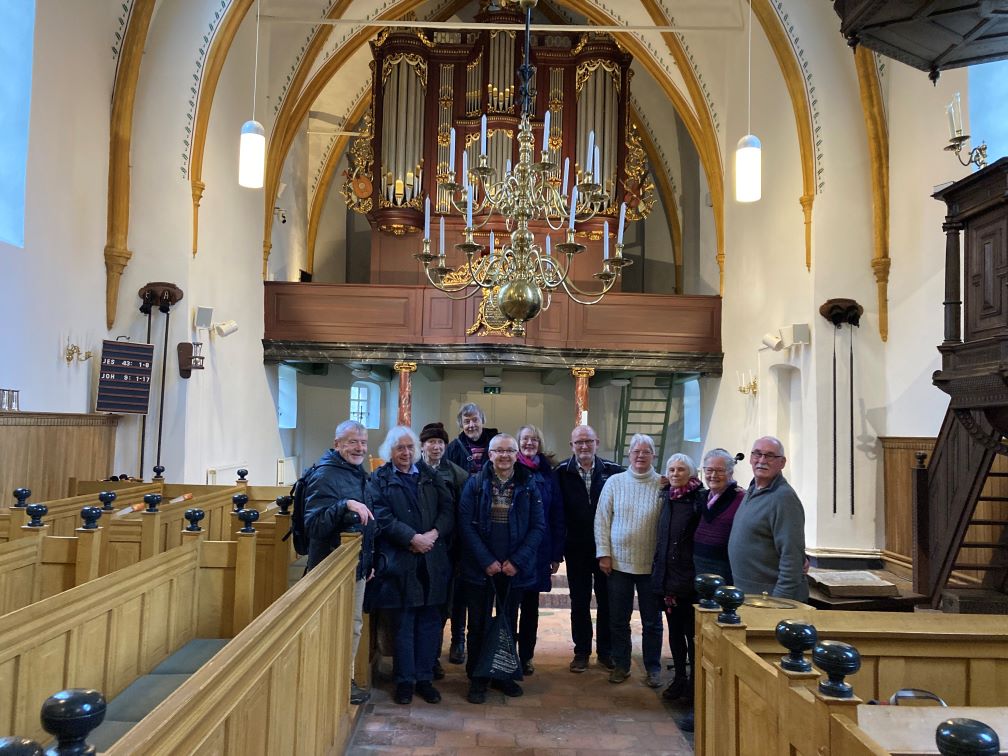
Alan Langridge
I had been looking forward to this trip for a long time. I had never been to the Netherlands before and never played a Schnitger organ, so this was incredibly exciting. An organist friend who I told about my trip emailed me just before we left to say: “I’m horribly jealous. We went there in 2012 and it (Noordbroek) remains one of my very favourite organs”. Noordbroek was the first organ we would encounter – could it live up to these expectations?
But what to play? Well, there had to be Sweelinck and Scheidemann, and Buxtehude and Bach. I allocated a lot of time for practice in the weeks before so I could play the pieces well, assuming I would need most of my faculties to negotiate the challenges of playing these organs.
And so our first visit was to the 1696 Schnitger organ at the Dorpskerk, Noordbroek, where we had a masterclass with Peter Westerbrink, the church’s organist. I had prepared Buxtehude’s Chaconne in E minor. After 5 minutes warm-up, I realised that this organ had a light touch and it was easy to adopt too fast a tempo and allow one’s playing to get out of control. Peter Westerbrink spent the masterclass helping me to reduce my movement (hands and feet) to a minimum to produce the best sound and minimise action noise, and he demonstrated the effect of not doing so. He encouraged me to establish a steady tempo for the Chaconne and then not vary it – very different from the way I was originally taught it. The results were really good and I will certainly work on it at home.
And did Noordbroek live up to expectations? Emphatically yes, Noordbroek was a truly glorious sound. “The most beautiful organ I have ever heard”, I wrote at the time. It was a privilege to play it.
The next day we visited the 1734 Hinsz organ at the Petruskerk, Leens. Walking to the front of the church and then turning around to see the organ for the first time gives one a truly amazing sight! However, I found the Hinsz particularly difficult to play – the keys (narrow and short), the pitch (very sharp), and wide spacing of pedals. I was not expecting this – I should have done my homework! I chose to try out Bach’s Prelude & Fugue in B minor, BWV 544 – a work I know very well – but I could not play it on this organ. Gradually as I persevered I realised that the organ was teaching me something new – it was showing me how to play the manuals (fingers back from the sharps/flats, thumbs off the keys), and how to change my pedalling (get rid of the few heels remaining – toes only was the only solution that worked). Incredibly frustrating, but a great opportunity to learn anew.
I have chosen to focus on these two organs, not because the other organs were disappointing – far from it. It is that Noordbroek and Leens were the two that made the greatest impression on me – and taught me the most.
It was lovely to be with a group of musicians and enthusiasts throughout the trip – and lovely to unwind with them in the evenings. It gave us all an opportunity to get to know one another better. And special thanks to Pieter Shaw whose organisation and hospitality was fantastic.
My next challenge? – I would love to go back – to Noordbroek to learn how to play this wonderful organ, and to Leens to conquer its unique challenges.
Alan Langridge

